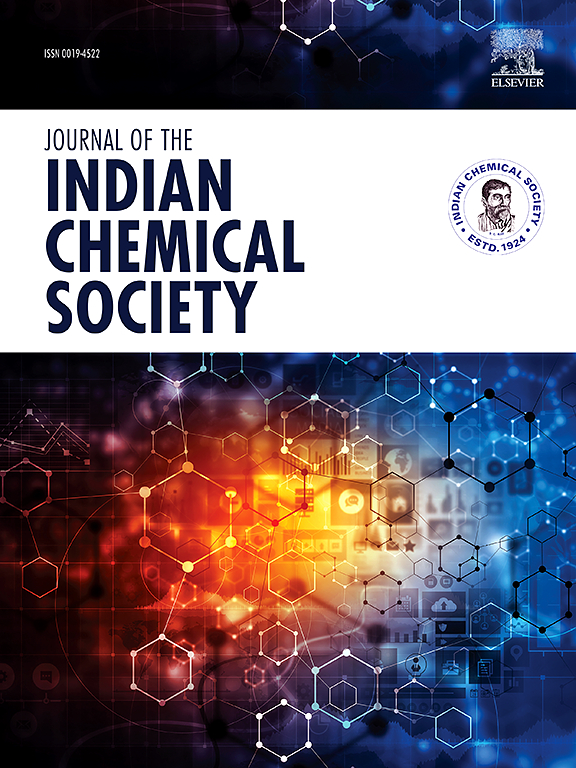Exploring donor-acceptor characteristics and adsorption behavior of a naphthamide-based inhibitor for protective surfaces through a molecular modeling approach
IF 3.2
4区 化学
Q2 CHEMISTRY, MULTIDISCIPLINARY
引用次数: 0
Abstract
Naphthamide derivatives have attracted significant attention due to their remarkable electronic properties and versatile applications. This study provides a comprehensive computational investigation of the adsorption behavior and interfacial mechanisms of two substituted naphthamide derivatives, (E)-3-hydroxy-N-(2-hydroxybenzylidene)-2-naphthamide (HBN) and (E)-3-hydroxy-N-(4-methoxybenzylidene)-2-naphthamide (HMN), on Fe (110) surface. Using density functional theory (DFT), density functional based tight binding (DFTB), and molecular dynamics (MD) simulations, the research reveals that functional groups significantly impact adsorption strength and stability, and naphthamide molecules interact with Fe (110) surface through a combination of physical and chemical mechanisms. The donor-acceptor characteristics and geometric structures of HBN and HMN facilitate strong coordination with iron atoms, and hydroxyl and methoxy functional groups adjacent to the benzene ring play a key role in the adsorption behavior. The quantum chemical analysis, employing DFT and DFTB-based calculations, revealed low energy gap (Egap) values of 2.77 eV for HBN and 2.53 eV for HMN, indicating high reactivity. Additionally, the calculated adsorption energies of −3.41 eV for HBN and −3.20 eV for HMN further confirm the strong interaction between naphthamide derivatives and the iron surface. The interfacial mechanism and structural engineering of HBN and HMN compounds for functionalizing metal alloy surfaces were explored through non-covalent interaction and electron density distribution analyses. The results indicate that naphthamide derivatives exhibit crucial intermolecular and intramolecular interactions, contributing to the formation of a robust adsorption layer. The parallel adsorption configuration, along with strong mutual interactions, facilitates the establishment of a stable self-assembled structure, reinforcing Fe–O and Fe–C bonds. This, in turn, enhances both chemical and physical adhesion to the steel surface, thereby improving its adsorption performance. Furthermore, MD simulations in corrosive solutions showed that the molecular geometry and functional group distribution seriously affect adsorption performance and stability. These results highlight the critical role of electronic interactions and molecular structure in optimizing the adsorption of naphthamide derivatives, offering valuable insights into developing advanced materials for corrosion protection.

求助全文
约1分钟内获得全文
求助全文
来源期刊
CiteScore
3.50
自引率
7.70%
发文量
492
审稿时长
3-8 weeks
期刊介绍:
The Journal of the Indian Chemical Society publishes original, fundamental, theorical, experimental research work of highest quality in all areas of chemistry, biochemistry, medicinal chemistry, electrochemistry, agrochemistry, chemical engineering and technology, food chemistry, environmental chemistry, etc.

 求助内容:
求助内容: 应助结果提醒方式:
应助结果提醒方式:


